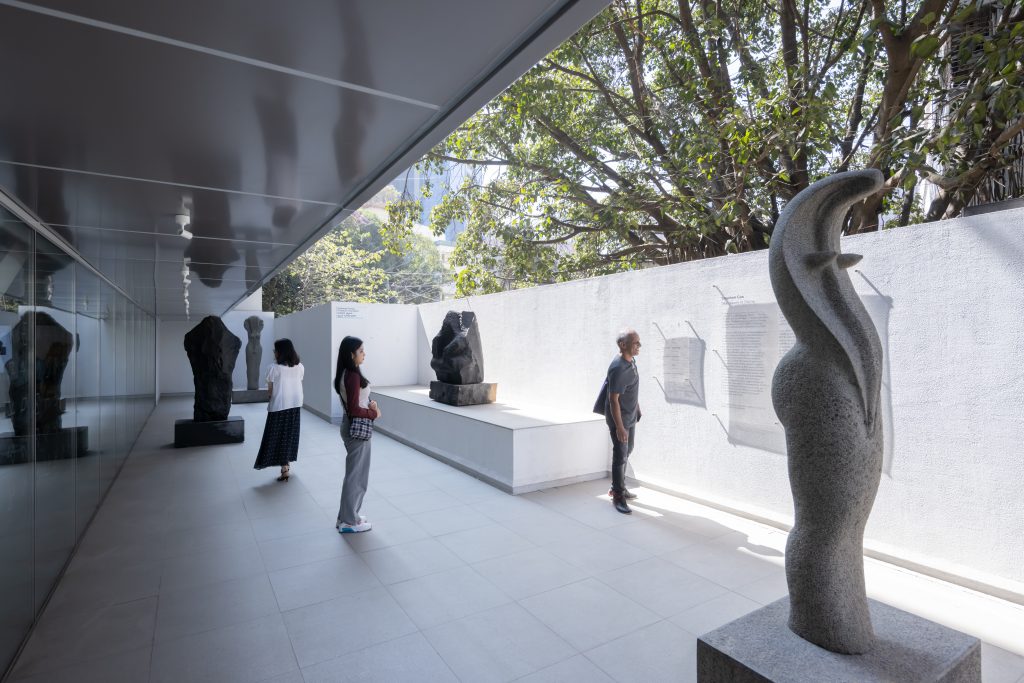Enjoy this article?
Most Museums Journal content is only available to members. Join the MA to get full access to the latest thinking and trends from across the sector, case studies and best practice advice.

Bangalore is the silicon valley of India, the land of Mysore silk sarees, coffee powders and sandalwood, and now it also offers the Museum of Art and Photography. The museum, which opened its doors to visitors in February, is located at the heart of the state of Karnataka’s capital city.
Its collection of more than 60,000 works ranges widely across all periods and presents paintings, sculptures and graphics, alongside textiles, tribal art and memorabilia of India’s world-famous Bollywood industry.
It deliberately blurs the boundaries between what is regarded as high art and the everyday creativity of the region’s communities. The photography collection is one of the most extensive in India with a particular focus on the period from the mid-19th century, a turning point in the history of Britain’s colonial relationship with the region, right up to the present day.

The museum’s five storeys comprise galleries, an auditorium, an art and research library, an education centre, a specialised research and conservation facility, and a terrace cafe.
The building has been designed by local architect Soumitro Ghosh in close consultation with the organisation Diversity and Equal Opportunity to ensure that the museum-going experience is both inclusive and accessible for everyone who visits.
Here, founder and chief curator Abhishek Poddar talks about the museum’s inception and vision, followed by director Kamini Sawhney, who further expands on the museum’s collection and its vision for the future.
Abhishek Poddar: I wish to create a museum-going culture in India. Our country has more than a thousand museums but people do not visit them that often. With the Museum of Art and Photography, I want to give art and culture their due respect. We did not want the museum to be dedicated solely to critics, observers or art students, we wanted to create a space where everyone can engage with art. It is time that we create spaces for the youth where they feel invited and where people who would never see themselves being in a museum can also engage with art and culture.

My personal collection of photographs makes up most of the museum’s photographic works. I have been an avid collector of photographs for 25 years and hence the collection at the museum dates back to the time when India was colonised and photography was introduced to the country. It ranges from studio photography to portraits and historic photographs.
The collection is influenced by my interactions with photographers Prabuddha Dasgupta [1956-2012] and contemporary photographer Dayanita Singh. It was their mentorship that exposed me to the art of photography and helped me develop a sharp eye for it. I also had the pleasure to know the French photographer Henri Cartier-Bresson [1908-2004] when I was a child, as he happened to come over to my house to see my parents.
He snapped a photograph of me with my cousins and sent it to me later with a letter. We continued to write to each other thereafter. [In the 1940s, Cartier-Bresson was given exclusive access to spiritual guru and anti-colonialist Mahatma Gandhi and also photographed India’s first prime minister, Jawaharlal Nehru.] His work around the independence of India and the consequent partition helped me understand the importance of capturing India’s history through a lens.
Kamini Sawhney: The art collection includes classical, contemporary, textile craft, Indigenous art, and even design. Very few museums in India recognise photography as an artform but the Museum of Art and Photography prides itself on gracing its walls with works by the finest photographers in India.
By displaying various forms of art, we are trying to build a connection between all of them and show how one form influences the other. Apart from that, the museum also displays popular culture as a form of art. This is often looked down on and termed as something for the masses, but we believe art has no hierarchies.
The museum attempts to relook at and reimagine the canons of art history. We observe how popular culture comments on society. Bollywood posters might fit nicely in our exhibitions, for example, and often depict how women are seen as objects of desire compared to men who are shown as [their] protectors.

We wish to transform the way art is experienced in India. We see art as an integral part of culture and society that should be preserved, and wΩ wish people to feel the same by coming to our museum and engaging with our collection. Technology has been an indispensable part of our journey to make art interactive and engaging for everyone. In this vein, we created a digital persona of artist MF Husain [1915-2011].
Visitors can ask his AI-generated twin questions about his life and work. We wish to create a museum-going culture in India and initiatives such as this help us invite people of all ages to our space and get them engaging with art.
Nandni Sharma is a freelance writer
Most Museums Journal content is only available to members. Join the MA to get full access to the latest thinking and trends from across the sector, case studies and best practice advice.